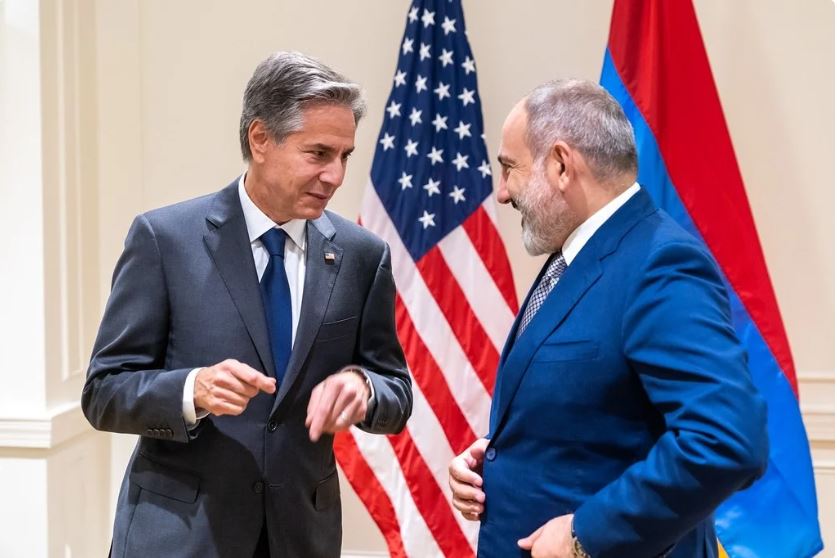by Suren Sargsyan
The Annual Threat Assessment of the US Intelligence Community of February 5, 2024 was recently published by the US state agencies. The report gives a clear understanding of how the US intelligence community sees the current state of affairs, which countries are deemed to be geopolitical rivals of the US, and regional issues that have the potential of having an impact on a global scale as well as functional and transnational challenges, e.g. proliferation, emerging technology, climate change. Terrorism, etc. The following article will focus on analyzing the parts of the report dedicated to US geopolitical rivals, the current state of international relations, as well as Armenian-Azerbaijani relations.
The report indicates that the United States is facing an “increasingly fragile global order.” This comes as no surprise because since the end of the Cold War, which concluded with the United States becoming the only superpower, a lot has changed, and increasingly more countries are challenging the United States. The main geopolitical rivals of the United States as of today remain Russia and China, along with other countries such as Iran and North Korea. Some non-state actors also remain a threat to what the report calls “US primacy within the international system.” This geopolitical confrontation is presented as a “larger competition between democratic and authoritarian forms of government,” where the United States is the champion of democracy.
Read also

Suren Sargsyan
The main geopolitical rivals of the USA are Russia and China. The report discusses in detail which areas and what kind of actions are threatening US security. First comes China, which is “undercutting US influence, driving wedges between Washington and its partners, and fostering global norms that favor its authoritarian system.” There are some main projects of geopolitical importance that aim to increase China’s influence, namely the Belt and Road Initiative, the Global Development Initiative, and the Global Security Initiative. These are projects that China has been working on for years.
However, in terms of economic development China’s economy will slow in the upcoming years because of “structural barriers and Beijing’s unwillingness to take aggressive stimulus measures to boost economic growth.” Apart from that, China is seeking to become a science and technology superpower, and using that for economic, political, and military gain. Science and technology is one of the heated areas of confrontation between China and the USA.
In terms of military influence, the US intelligence community considers that Beijing will be working to make the People’s Liberation Army a world-class military by 2049, though its effectiveness is questionable owing to the lack of recent warfighting experience. With all these being said, China is ready to work in reducing tension with Washington whenever it’s beneficial.
The second geopolitical rival for US supremacy is Russia. The US intelligence community considers it to pose a serious threat to the US in a wide range of areas despite the enormous damage caused by the Ukrainian war. A major challenge for the US and its partners is Russia’s strengthening ties with China, Iran and North Korea, including Russia’s economic engagement with Beijing, which can provide protection from potential sanctions.
The US intelligence community considers that although Russia does not want to engage in a direct conflict with the US and NATO, it will “continue asymmetric activity below what it calculates to be the threshold of military conflict globally.” Russia will modernize its nuclear weapon capabilities, since that is viewed as a deterrence and ultimate guarantor. Last but not least, the US intelligence community considers that Russia probably will attempt to affect the elections of 2024, because elections are deemed as an opportunity for influence.
On a regional scale, Iran is being considered as one of the major threats to US interests on several fronts. First and foremost, the topical issue between the US and Iran is Gaza. In the report, Iran is posed as a remaining threat to Israel and US allies. The United States is specifically concerned that Iran will continue arming and aiding its allies as well as backing Hamas to threaten the United States. However, they are sure that Iran will remain careful to avoid a direct conflict with either Israel or the United States.
Another major concern about Iran is its nuclear arsenal. Though Iran currently does not conduct major nuclear weapons development activities needed to produce testable nuclear devices, Tehran has reiterated since 2020 that it is no longer bound by the Joint Comprehensive Plan of Action’s restrictions. It has embarked on activities that would significantly expand its nuclear program and better enable it to manufacture nuclear devices if it decides to get one.
Iran’s rapprochement with Russia is another cause for concern։ the US considers that Iran will continue to further its ambitions by trying to bolster ties with Moscow. Moreover, during 2023 it has already expanded its diplomatic influence by boosting its relations with Russia, Saudi Arabia, and Iraq.
Iran is also meddling in US elections. Specifically in the 2020 US elections, Iranian hackers obtained or attempted to obtain information about US voters, sent voters intimidating emails, and spread disinformation about the elections. According to the report, Iranian cyber actors have developed new sets of technologies, combining cyber and influence capabilities. Their new capabilities might potentially be used during the 2024 U.S. election period.
The other regional threat to US interests is North Korea. The leader of North Korea, Kim Jong Un, will continue to develop its nuclear and conventional military capabilities and that is a security threat for the West and its allies. On top of that, the North Korean leader is striving for deeper cooperation with the US’s geopolitical rivals, such as Russia and China, to further strengthen its financial benefits, diplomatic and defense cooperation.
The US intelligence community report also analyzed some regional and localized conflicts because of the potential of regional spillover and ultimately the world. The conflict between Armenia and Azerbaijan is among the list of such regional conflicts. According to the report there is a threat of the conflict escalation between Armenia and Azerbaijan taking into account the following factors: the absence of a bilateral peace treaty, the proximity of the military forces, no mechanism to enforce a ceasefire, and Azerbaijan’s willingness to use military force to advance its goals in negotiations with Armenia.
The report refers to the loss of Nagorno-Karabakh by Armenians in the context of Russian-Armenian relations, stating that the reason for that was Russia’s involvement in war with Ukraine. This led to Russian unwillingness to expend the resources and political capital to prevent Azerbaijan from reacquiring Nagorno-Karabakh. This in turn eventually led to Armenia seeking alternative partners to Russia.






















































